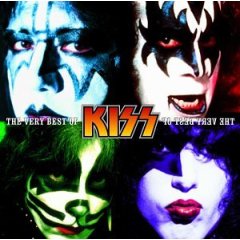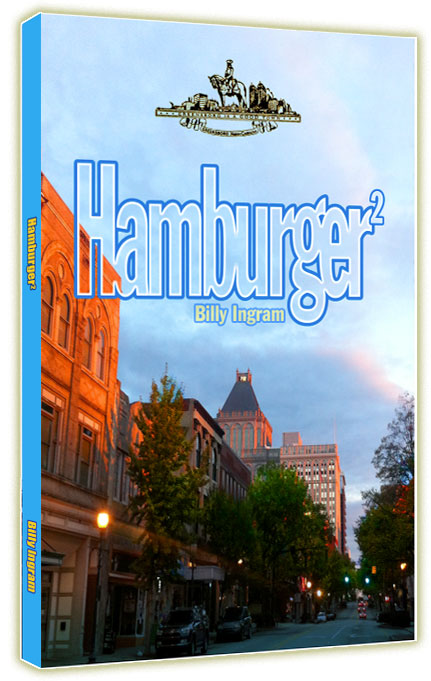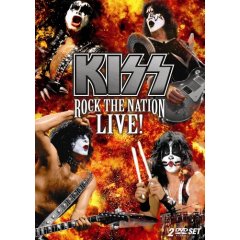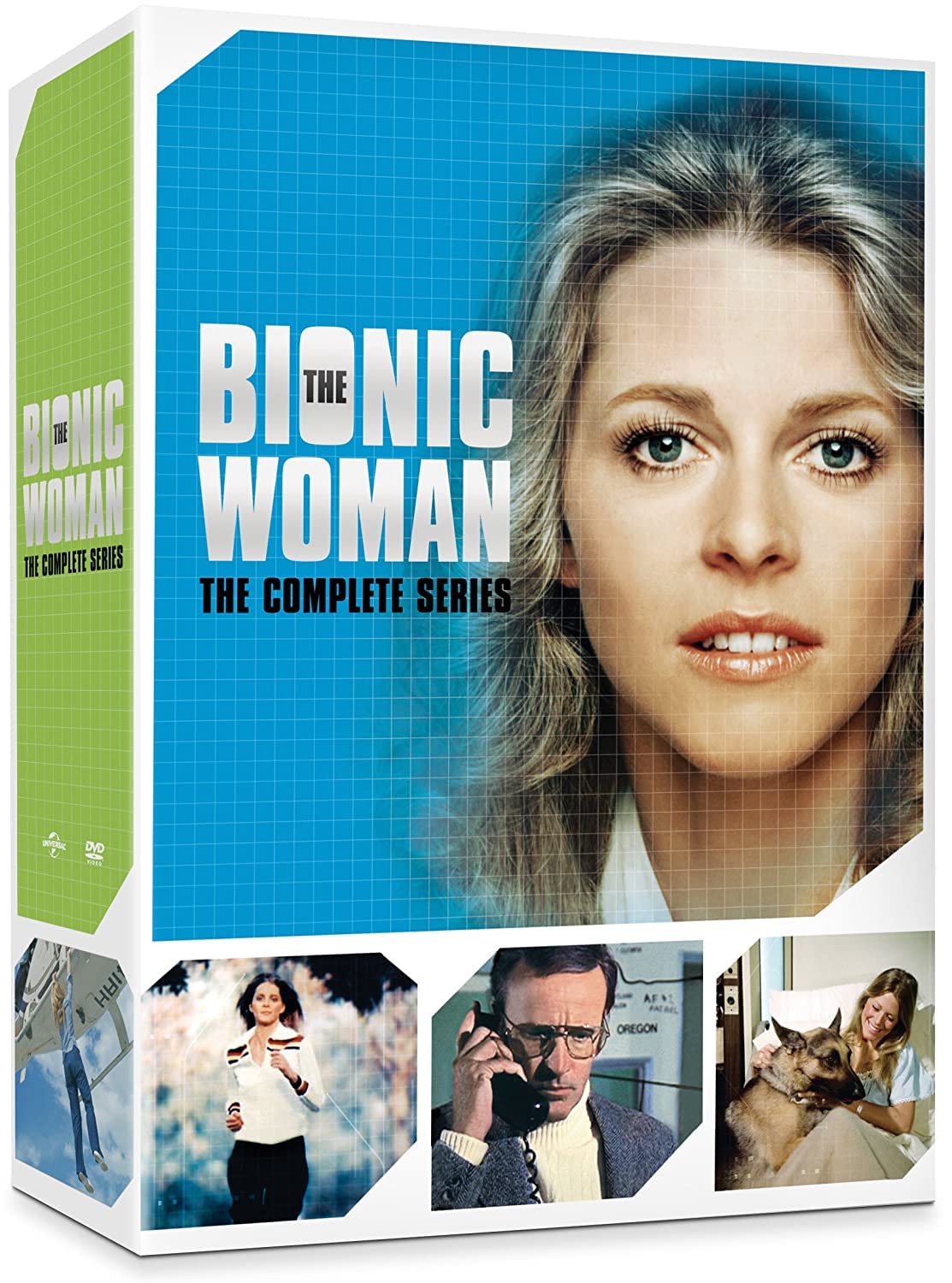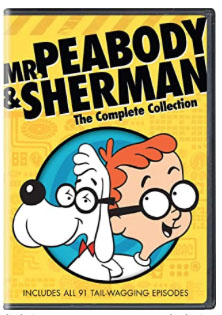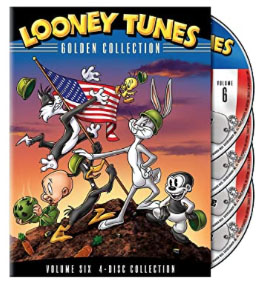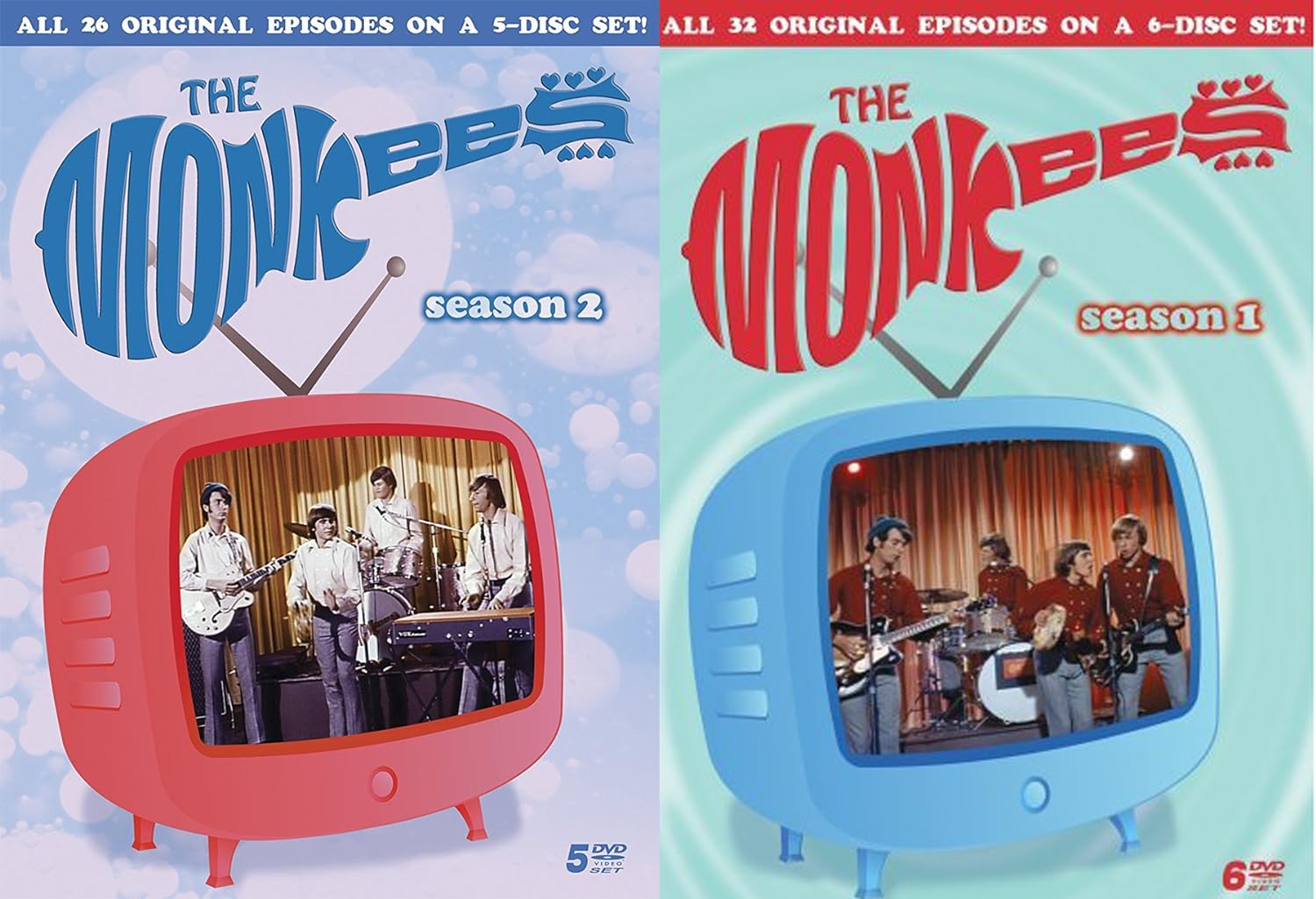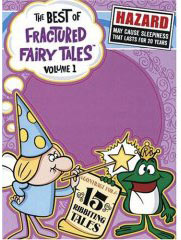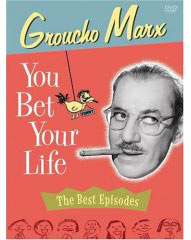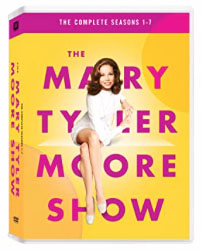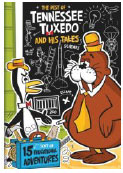| 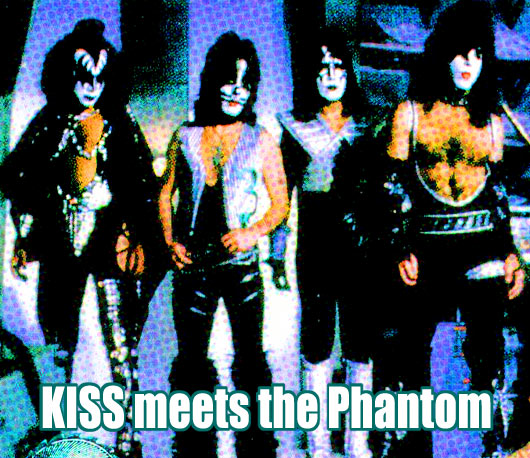
by
L. Wayne Hicks
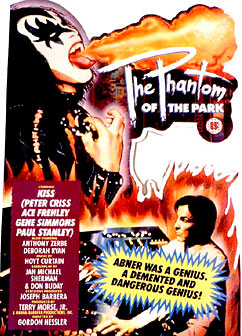
Like so many other things, Kiss Meets the Phantom of the Park
seemed like a good idea at the time.
The Beatles
had successfully made the transition from recording studio to silver screen,
so why couldn't Kiss similarly make its mark in a made-for-TV movie? If
there was ever a band destined for theatrics, it was Kiss, with its lineup
of four rockers determined to draw attention to themselves.
Kiss
Meets the Phantom of the Park aired Oct. 28, 1978, on NBC, a two-hour
movie that proved two things:
1. Kiss fans were eager for whatever their favorite band put in front
of them.
2. None of the guys in Kiss could act.
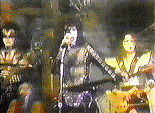 The
story of Kiss is a familiar one by now: the group's origins in New York
in the early 1970s, how they took the idea of the New York Dolls to wear
makeup several steps further, became a phenomenon and faced down religious
zealots who insisted Kiss was an acronym for “Knights In Satan's
Service." The
story of Kiss is a familiar one by now: the group's origins in New York
in the early 1970s, how they took the idea of the New York Dolls to wear
makeup several steps further, became a phenomenon and faced down religious
zealots who insisted Kiss was an acronym for “Knights In Satan's
Service."
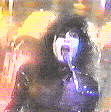 Really,
Kiss was just four guys who wanted to make it big in music: Gene Simmons,
the bass player who breathed fire and spit blood and hid his face beneath
a layer of demonic-looking makeup. Paul Stanley, the sultry lover and
rhythm guitarist whose face was adorned with a star over one eye. Peter
Criss, the drummer who adopted a cat as his disguise. And Ace Frehley,
the cosmic-thinking lead guitarist who tricked out his guitars to shoot
sparks, naturally made himself over as a spaceman. Really,
Kiss was just four guys who wanted to make it big in music: Gene Simmons,
the bass player who breathed fire and spit blood and hid his face beneath
a layer of demonic-looking makeup. Paul Stanley, the sultry lover and
rhythm guitarist whose face was adorned with a star over one eye. Peter
Criss, the drummer who adopted a cat as his disguise. And Ace Frehley,
the cosmic-thinking lead guitarist who tricked out his guitars to shoot
sparks, naturally made himself over as a spaceman.
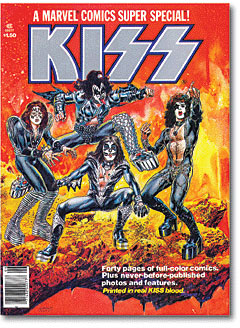 Born
in Israel as Chaim Witz, but reared in New York from 9 on, Simmons grew
up fascinated by American popular culture: rock ‘n' roll, horror
movies and comic books. All of that helped influence the creation of Kiss. Born
in Israel as Chaim Witz, but reared in New York from 9 on, Simmons grew
up fascinated by American popular culture: rock ‘n' roll, horror
movies and comic books. All of that helped influence the creation of Kiss.
Marvel Comics
was the first to realize the superhero-like qualities of Kiss and included
the band in back-to-back of issues of Howard the Duck's comic
book in the summer 1977 and then gave them their own glossy comic later
that year.
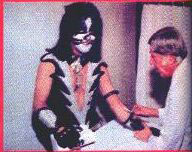 Kiss
made the 40-page Marvel Comics Super Special stand out by adding their
own blood to the printer's ink. The comic included everything a fan of
Marvel could want, including Kiss battling Doctor Doom and appearances
by the Fantastic Four and Spider-Man. Kiss
made the 40-page Marvel Comics Super Special stand out by adding their
own blood to the printer's ink. The comic included everything a fan of
Marvel could want, including Kiss battling Doctor Doom and appearances
by the Fantastic Four and Spider-Man.
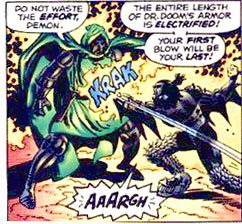 The
next step, of course, would be to take their adventures as comic book
heroes, with their unique super powers, and bring them to life on the
screen, even the small screen. The
next step, of course, would be to take their adventures as comic book
heroes, with their unique super powers, and bring them to life on the
screen, even the small screen.
"When
we were asked to do Kiss Meets the Phantom, it was pretty much
sold to us as Hard Day's Night meets Star Wars,"
Stanley said during the two-hour VH1 program Kiss Behind the Makeup,
which aired in 2001. "What it turned out to be was anything but that."
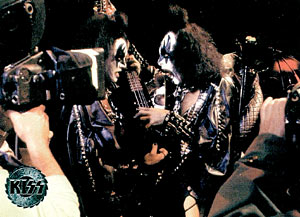 Kiss
Meets the Phantom of the Park tells the story of a mad scientist
working in a California amusement park. Kiss is there for a concert, but
the guys are captured and replaced by robotic doubles. Fortunately, Kiss
can do more than rock and roll all night and party every day. They are
infused with special powers: Frehley can teleport himself and the others.
Criss has cat-like abilities. Stanley can shoot a laser beam out of one
eye. And Simmons can breathe fire. Kiss
Meets the Phantom of the Park tells the story of a mad scientist
working in a California amusement park. Kiss is there for a concert, but
the guys are captured and replaced by robotic doubles. Fortunately, Kiss
can do more than rock and roll all night and party every day. They are
infused with special powers: Frehley can teleport himself and the others.
Criss has cat-like abilities. Stanley can shoot a laser beam out of one
eye. And Simmons can breathe fire.
Hanna-Barbera
Productions, best known for making Scooby-Doo, Yogi Bear
and other cartoons, approached Kiss about appearing in a movie to fulfill
its obligation to make movies for NBC. The idea was to make Kiss appear
larger than life - the opening credits did just that, with the guys superimposed
over the amusement park and appearing to loom large over the rides. But
rather than play to their strengths - music - the script forced them into
the unfamiliar role of actors. Only a few songs are even in the movie,
including an acoustic version of “Beth." A soundtrack was never
released, despite plans to do so, and the only new song to appear is “Rip
and Destroy," a rewritten version of “Hotter than Hell."
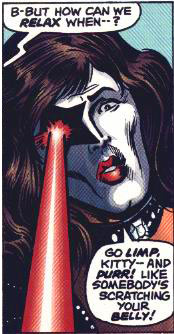 "When
I originally read the script," Simmons announced in a Hanna-Barbera
press release, "the first thought that came to my mind was comic
books. I think that's the flavor of this film. There's a villain and we're
the good guys. It's your basic American dream situation where you've got
superpowers." "When
I originally read the script," Simmons announced in a Hanna-Barbera
press release, "the first thought that came to my mind was comic
books. I think that's the flavor of this film. There's a villain and we're
the good guys. It's your basic American dream situation where you've got
superpowers."
If Simmons
was happy with the script, Frehley wasn't. Almost all of his lines were
him sounding like a parrot.
The scriptwriters
- Jan Michael Sherman and Don Buday - had hung around with the band before
going to work, to get a feel for how they spoke. But Frehley wasn't in
a talkative mood those days.
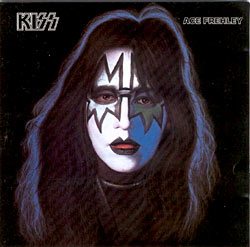 "When
the script came in, Ace's character never spoke. He only said ‘Awk.'
Ace was furious," Simmons wrote in his book "Kiss and Make-Up."
"He wanted to know why they didn't give him any lines. To their credit,
they turned around and said, ‘What are you, nuts?' You have never
said anything to us except "Awk." We thought that's the way
you want to talk.'" "When
the script came in, Ace's character never spoke. He only said ‘Awk.'
Ace was furious," Simmons wrote in his book "Kiss and Make-Up."
"He wanted to know why they didn't give him any lines. To their credit,
they turned around and said, ‘What are you, nuts?' You have never
said anything to us except "Awk." We thought that's the way
you want to talk.'"
The script
drew its inspiration from the Marvel Comics treatment of the band as superheroes,
which gave each with a unique talisman that is the source of their powers.
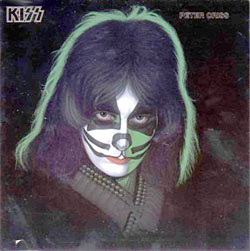 Sherman
and and Buday only have three writing credits to their name, one of which
is the 1976 movie Too Hot to Handle, which they wrote together.
They were experienced as writers as much as Kiss were actors, and contributed
such memorable dialogue as this: Sherman
and and Buday only have three writing credits to their name, one of which
is the 1976 movie Too Hot to Handle, which they wrote together.
They were experienced as writers as much as Kiss were actors, and contributed
such memorable dialogue as this:
CRISS: I'm thinking of building a mansion in Catland.
FREHLEY: Awk?
CRISS: Not an ark - a mansion.
The first
draft of the script noted that Frehley "is monosyllabic and super-friendly.
Communicating largely through gestures and sounds, Ace might be best described
as an other-galactic Harpo Marx."
READ
PART TWO:
How KISS Meets the Phantom
almost broke the group up!

|

